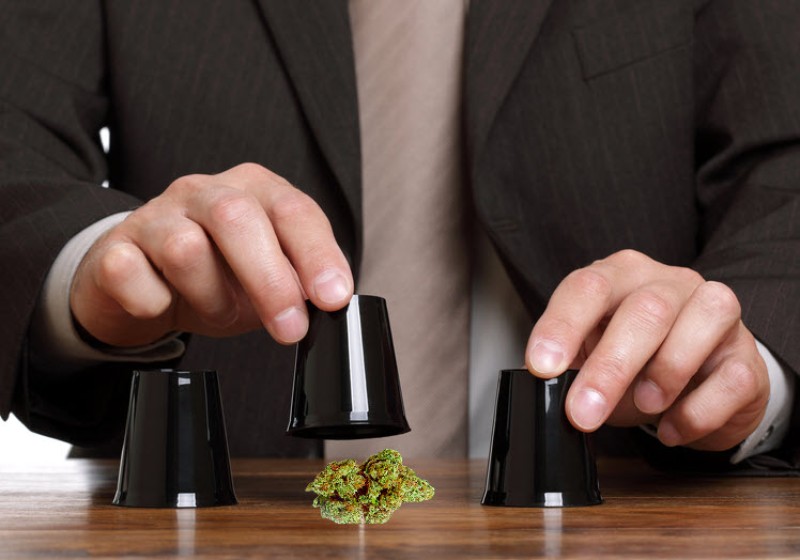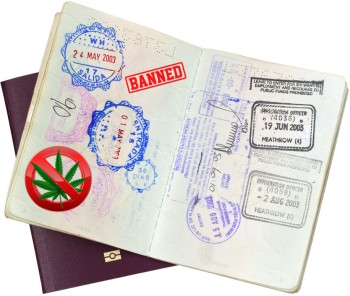
The Cannabis Shell Game: How Inversion Threatens Legal Markets and Your Stash
When I first heard about Justin Trouard's discovery in Colorado's cannabis market, I thought it was just another tale of a struggling business making bad decisions. I couldn't have been more wrong. What this CEO of Mammoth Farms stumbled upon wasn't just poor business practices—it was nothing short of "the blueprint for laundering marijuana" through supposedly secure regulatory systems.
Imagine this scenario: A licensed cannabis cultivator buys 25 pounds of flower for $16,250 (a perfectly reasonable market price), then turns around and sells the exact same product for...$20. Yes, twenty dollars. Not twenty thousand—just twenty. That's a deliberate loss of $16,230 on a single transaction. And this wasn't a one-time accounting error. According to Trouard's findings, this operation reported buying $3.4 million worth of cannabis only to resell it for $70,000.
As someone who's watched the cannabis industry evolve from underground operations to licensed businesses with barcodes and tracking systems, I find this particularly disturbing. We're witnessing the emergence of a sophisticated shell game where illicit products infiltrate legal markets while regulated cannabis mysteriously disappears—all happening right under regulators' noses.
This practice, known as "inversion," represents the exact opposite of what legalization skeptics feared. Rather than legal weed leaking into the black market (diversion), we're seeing black market products sneaking into legal dispensaries. And the implications for consumers, businesses, and government coffers are staggering.
So strap in, fellow cannabists. We're about to pull back the curtain on a scheme that threatens the very foundation of legal cannabis markets—and potentially the quality and safety of what's in your stash.
Follow the Flower: Anatomy of a Cannabis Shell Game
Let's break down exactly what Trouard discovered when he agreed to help a struggling Colorado cultivation company—a favor that turned into a regulatory bombshell.
Looking through the company's Metrc records (the mandated seed-to-sale tracking system), Trouard noticed something fishy. The business was conducting transactions that made absolutely no financial sense. They'd purchase cannabis flower at normal market rates, then immediately sell it at catastrophic losses, claiming they were converting high-value flower into material for distillate extraction.
Here's how the scheme appears to work:
First, the company legitimately purchases cannabis flower within the legal market, properly documented in Metrc. For example, spending $16,250 for 25 pounds of cannabis—totally normal.
Then comes the sleight of hand. The company records a transaction showing they sold this premium flower to another cultivator for extract purposes—for a mere $20. That's a 99.9% loss, which would bankrupt any real business almost instantly.
What Trouard believes is actually happening? That premium legal flower never makes it to extraction. Instead, it's diverted to the illicit market where it commands full price without any taxes or regulatory oversight.
Meanwhile, to replace the diverted product, cheap hemp-derived THC oil (which costs a fraction of regulated cannabis extracts) is inserted into the supply chain. This unregulated substitute then gets processed into vape cartridges and sold in licensed dispensaries across Colorado.
"This is what's taking place throughout Colorado," Trouard contends. And the kicker? All of this was plainly visible in the state's own mandated tracking system. The business reported buying $3.4 million worth of cannabis flower that it then resold for $70,000. No business would voluntarily lose $3.33 million unless something else was going on behind the scenes.
After filing a lawsuit against Colorado's Marijuana Enforcement Division (MED) on March 10, Trouard identified a similar pattern at another licensed Colorado operation. This suggests we're not looking at an isolated incident, but potentially a widespread methodology for gaming the system.
What's most alarming is how this scheme leverages the very regulatory systems designed to prevent such activity. The elaborate track-and-trace infrastructure—sold to lawmakers and the public as the solution to keeping cannabis controlled—is being manipulated to facilitate exactly what it was supposed to prevent.
Sleeping at the Wheel: Regulatory Failures and Market Consequences
The most perplexing aspect of this whole saga isn't the scheme itself—wherever there's regulation, someone will try to circumvent it. What's truly baffling is how Colorado's Marijuana Enforcement Division failed to flag these obviously suspicious transactions. We're talking about a business reporting millions in losses that would defy any rational economic behavior, all documented in the state's own tracking system.
This raises serious questions about the efficacy of the vaunted Metrc platform and similar seed-to-sale tracking systems that form the backbone of cannabis regulation nationwide. These systems don't come cheap—states spend millions implementing them, and businesses bear significant compliance costs. But what good is sophisticated tracking if nobody's actually analyzing the data?
It's like installing an elaborate security system in your home, then never checking the footage when things go missing. The technology is only as effective as the humans monitoring it.
Colorado isn't alone in facing these challenges. In New York, former Cannabis Control Board member Jennifer Gilbert Jenkins publicly called inversion the industry's "dirty secret that everybody is talking about." Yet despite industry insiders raising alarms, the issue has failed to gain traction with legislative bodies or regulatory agencies.
This regulatory blindspot creates a devastating double threat to legal cannabis markets. On one side, you have diversion (legal cannabis leaking to illegal markets), which has been the focus of regulatory efforts since day one. On the other side, you have inversion (illegal products entering legal channels)—potentially more damaging yet receiving far less attention.
For compliant operators trying to play by the rules, this creates an impossible competitive landscape. They're paying taxes, lab testing costs, and regulatory fees while competing against products that bypass these expenses entirely. It's like running a race where some participants are forced to wear weighted vests while others secretly take shortcuts.
The situation perfectly illustrates a frustrating paradox in cannabis regulation: excessive rules without effective enforcement gives us the worst of both worlds. Legitimate businesses struggle under regulatory burdens while bad actors exploit systemic weaknesses, creating an environment where following the rules becomes a competitive disadvantage.
Following the Money: Tax Implications and Consumer Impact
Beyond the regulatory failures and market manipulation, there's a significant financial dimension to this scheme that affects everyone—even those who've never touched cannabis.
Remember those suspiciously undervalued transactions? They don't just facilitate product laundering; they also enable massive tax evasion. In Colorado, cannabis is subject to a 15% excise tax charged on the first sale from a cultivation facility to a store or product manufacturer. But cultivation-to-cultivation transfers generally aren't taxed.
By drastically devaluing products before they reach the taxable transfer point—reducing $3.4 million in flower value to $70,000—the scheme potentially robbed Colorado of approximately $500,000 in excise taxes from just one operation. Trouard estimates that if this practice is widespread, Colorado's lost tax revenue could exceed $100 million over time.
That's money that should be funding schools, public health initiatives, and infrastructure—diverted instead into the pockets of those gaming the system.
For consumers, the implications are equally concerning. When you purchase a product from a licensed dispensary, you assume you're getting something that's been tracked from seed-to-sale, tested for contaminants, and produced according to regulatory standards. But if that vape cartridge contains oil from unknown sources that bypassed testing requirements, what are you really inhaling?
The situation creates ripple effects throughout the market. Prices get artificially manipulated, product quality becomes inconsistent, and consumer trust—the foundation of any successful regulated market—erodes. Even cannabis consumers who prioritize buying from legal sources can't be certain they're getting what they think they're paying for.
What's particularly insidious about this scheme is how it undermines the very arguments that propelled legalization forward. Advocates promised regulated markets would ensure product safety, generate tax revenue, and eliminate the harms associated with prohibition. When those promises are broken, it gives ammunition to prohibitionists who always claimed legalization would fail.
Plugging the Leaks: What's Next for Cannabis Regulation
As I consider the implications of Trouard's discovery, I'm left wondering whether our current approach to cannabis regulation is fundamentally flawed or simply poorly executed. Either way, something needs to change.
The solution isn't necessarily more regulation—it's smarter regulation with actual enforcement teeth. Track-and-trace systems like Metrc contain mountains of valuable data, but that data is worthless if regulators aren't analyzing it for suspicious patterns. Basic algorithmic flags could easily identify transactions where products lose 99% of their value overnight.
For consumers, this saga highlights the importance of knowing your sources. Ask questions about where your products come from, support businesses with transparent practices, and demand accountability from both operators and regulators.
Industry professionals need to become more vocal about these issues. The "dirty secret" Jenkins referenced needs to become a loud, public conversation. Legitimate cannabis businesses have every incentive to expose and eliminate these practices that undermine their ability to compete fairly.
Perhaps most importantly, we need to recognize that excessive regulation without effective enforcement creates the perfect environment for criminal enterprises to thrive. When compliance becomes so burdensome that businesses can barely survive playing by the rules, corner-cutting becomes tempting—and outright fraud becomes profitable.
Can regulated cannabis markets survive with these vulnerabilities? I believe they can, but only if we address these issues head-on. The alternative—pretending everything's fine while the foundation crumbles—will eventually collapse the entire structure we've spent decades building.
The cannabis industry has overcome countless obstacles on its path from prohibition to regulation. This challenge, though significant, is just the next hurdle to clear in our ongoing journey toward a truly legitimate, functional cannabis marketplace. But first, we need to acknowledge the problem—and demand better from those entrusted with maintaining market integrity.







